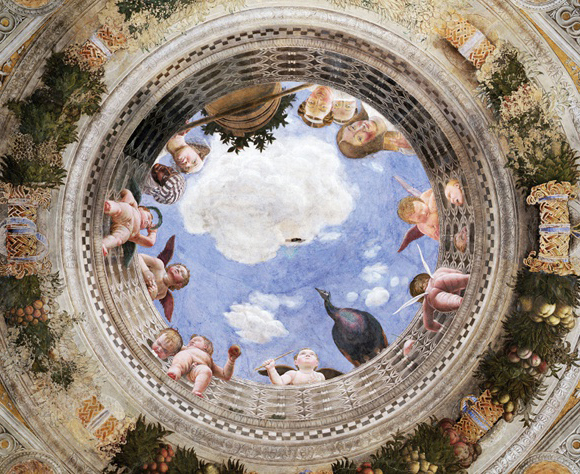

“The city is in ruins.” In European cultural memory, these simple words have, sometimes, a literal definition (either narrative or descriptive)—when we talk about wars, insurrections, and natural disasters, for instance. More often, they have a strong metaphorical relevance according to two complementary directions. Sometimes, the image of the city in ruins embodies the end of a culture that lost its battle against another (typically, the end of paganism giving to Christianity the cultural space of Europe); on the other hand, the same image can describe the ongoing crisis of society and its cultural decline, either morally or politically. Nowadays, these two metaphorical meanings of the ruins have found their own citizenship, a new symbolic horizon and new forms of representation.
In the second direction, The metaphor of the city in ruins lends itself to describe the crisis of the values we are living now. In a central position, which seems to be overlooked by most, the ruthless iconoclasm devours landscapes, guts historical centers, demolishes buildings of virtue, and subordinates every kind of historical memory and immaterial value to the brutal manoeuvres of a financial and/or construction speculation. However, the first metaphoric option (the cultural decline) can reflect the transition, which is evident and essential even if unfinished, from a Eurocentric conception to a multicultural horizon. Both of these directions are inserted on the same context: the crisis of democracy and its values. Among these, the equality of all human beings and the rights of the communities, but also the protection of urban structure and landscapes, which is the reflection and guarantee of those rights.
The city can be seen as nourishment and the cradle of civilization, but at the same time, both a tangible reality (the most functional and complex creation of the human mind) and an immaterial community made of streets, houses, and above all, people. It is the polis, which builds up walls and monuments, it is the polis, which generates, from its breast, the politics: a word that, for its etymology and its historical and cultural genealogy, should define the free interchange between citizens (politai) within their community area and not (as many believe) the job of politicians. From this dual nature of the city (its buildings and its inhabitants) comes the metaphoric strength of a sentence such as “the city is in ruins,” which can both allude (according to the context) either to the fall of its walls or to the collapse of its ideals.
However, the metaphor of the city in ruins seems to reflect on how to escape from the crisis. This is typically a European tradition, highly considered by the American critic John B. Jackson. In a brief and intense essay, Jackson eloquently affirms that ruins are essential to every society (even if, as in the US, they have a young history behind them), to think about itself and build its own future.[1] As Jackson writes”
“The ruins only can offer an efficient impulse to rebirth, a return to the creative energy of the origins. A gap either of death or oblivion is necessary for a civilization to renew itself for real.”
The metaphoric power of the ruins, as aesthetically seductive as it might be, cannot make us forget the historical and physical reality from which the metaphor was born and from which it drew its inexhaustible energy. It is therefore necessary, so to speak, “to master the metaphor,” keeping always in mind the real ruins we are besieged by (i.e. abandoned churches, historical centers that are neglected, coasts devastated by concrete, highways and railways invading archaeological sites and gardens of historical villas…). We must give back to the real ruins, which are menacing us, the horizon of values coming from their metaphorical projection. Going back to the physicality of the ruins deprives the metaphor of what is abstract, forcing us to look for the historical roots and check it on the present.
Let us look carefully at the ruins that surround us; but let us look at them with worried eyes. If we only ask, they will have a lot to say: if we do not consider them as an inevitable tragedy but as a result of culpable choices, both ethical and political, against which we can exercise our right to speech. If we will not let those, who grew the ruins to make a profit, dance on them, if we will be able to listen to the voice of the city in ruins and the aesthetic, ethical, and political lessons that preserve the memory of those ones who built it. If we will be able to design a future worthy of this memory.
Salvatore Settis is an archaeologist and art historian who has been the director of the Getty Research Institute of Los Angeles and the Scuola Normale Superiore of Pisa. He is chairman of the Louvre Museum’s Scientific Council. Settis, considered the conscience of Italy for his role in spotlighting neglect of its national cultural heritage. He is the author of several books on art history as well as a regular contributor to major Italian newspapers and magazines.
[1] John B. Jackson, The Necessity for Ruins, and Other Topics, University of Massachusetts Press, Amherst 1980. Being a long forgotten essay, it has recently found a renewed fortune, as shown by both the French version (De la necessité des ruines et autres sujets, Linteau, Paris 2005) and the Italian one (which is included in Id., A proposito dei paesaggi: dodici saggi brevi, by Attilio Petruccioli, ICAR, Bari 2006, pp. 39-50; here is included also an essay by Petruccioli about J.B. Jackson).
Published on November 2, 2017.
Photo: Oculus on the Camera degli Sposi (1473), Andrea Mantegna, Ducal Palace, Mantua, Italy.
This essay was originally published in Cieli d’Europa. Cultura, creatività, uguaglianza (Utet, Torino 2017) by Salvatore Settis.




